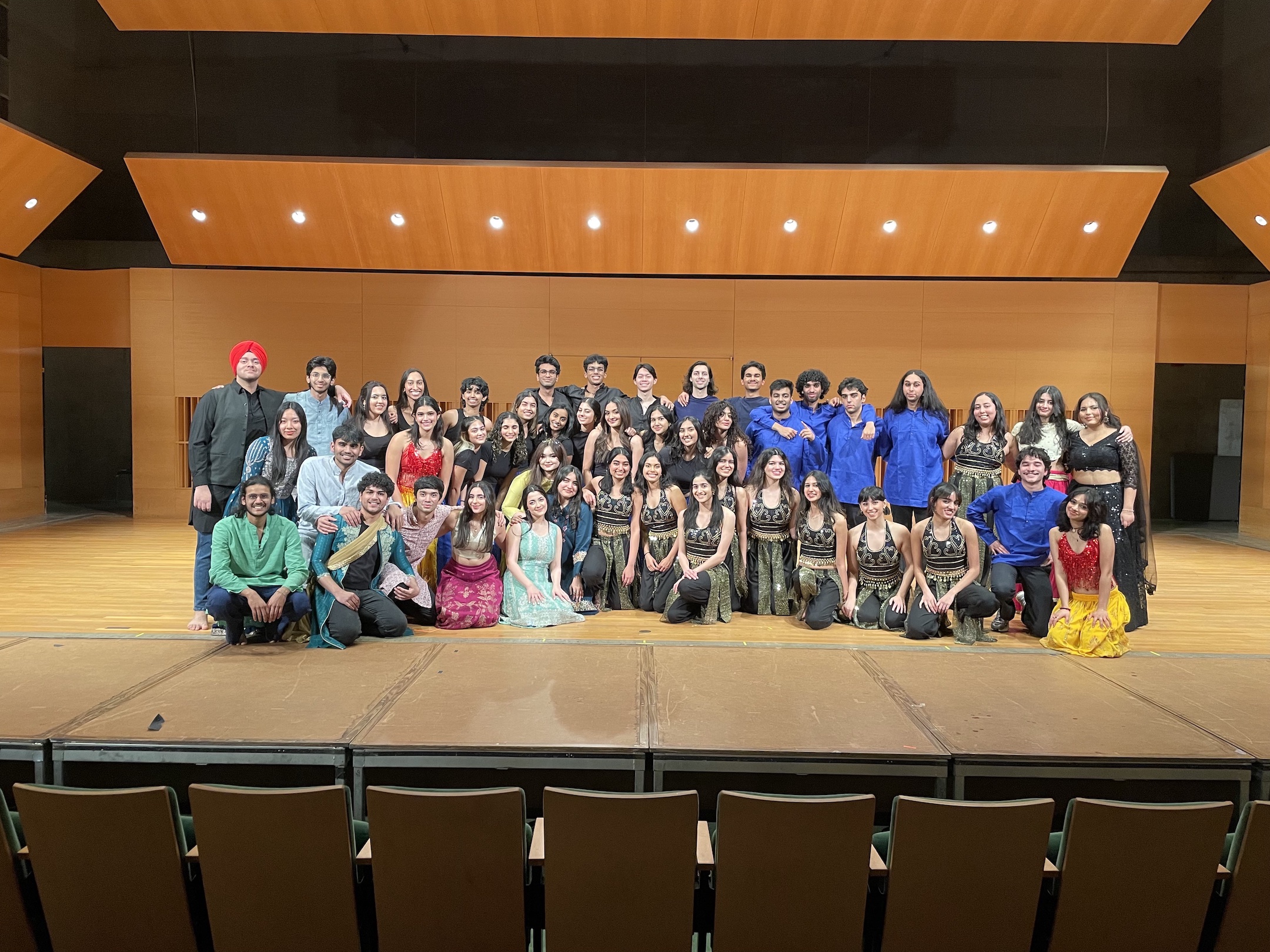
c/o Aniya Akhtar
The snowy walk to Crowell Concert Hall, the sparkle of salwar-kameez and kurtis under winter coats, and the echo of Disco Deewane during rehearsal presaged a successful Samsara performance on Saturday, Feb. 17 for many of us South Asians on campus. Samsara is a cultural performance put on annually by Shakti, the South Asian student group. This year, it was held for the first time in Crowell and featured multiple Bollywood dance performances, musical performances by foreign language teaching assistant Areeba Shabbir and the Indian-Western fusion band ATMAN, and a play that I co-wrote and acted in.
The theme this time, mostly seen in the play, was based on “Indian Matchmaking,” a Desi reality TV show, with a twist. Clips of South Asians introducing themselves and their seemingly ridiculous stipulations for a partner are comedic staples on social media, and our goal for Samsara this year was to delve into these demands with more nuance than on social media and more substance than on TV. The play followed Sima Aunty, a well-known Indian reality TV personality and matchmaker, who interacted with parents of South Asian students, asking about their criteria for their children’s partners. To no surprise, she found matchmaking at Wesleyan hopeless. By the end of the play, Sima Aunty becomes ultra politically correct, using criteria such as whether a potential love interest composts and takes Feminist, Gender, and Sexuality Studies (FGSS) courses, instead of caste or skin color, to decide whether they are suitable.
As playwrights, actors, and choreographers, we strove to preserve the beloved absurdism of Bollywood romance while unraveling the many stereotypes that have historically undermined it. A huge aspect of this was deciding to set the play at the University, which made the clash between modernity and cultural relativism rather natural.
Historically, the play component of Samsara has highlighted an important social issue in South Asian cultures. Most international students from South Asia, including myself, have felt the stark divide between social norms at an American liberal arts school and those in our hometowns. For instance, one of the few Bollywood films showcasing a gay couple, “Dostana” (2008), made fun of queerness and instead focused on a heterosexual love triangle. Our play aimed to deal with this.
“As someone who has never seen the show [“Indian Matchmaking”] but has heard of its heteronormative stance that reflects our society, I really enjoyed the liberties the writers took to make a dynamic, easier play for everyone to enjoy,” Arjun Menezes ’27, a lead actor in the play, said. “The acting role I took on is definitely not something I would have been able to do as easily back in India, where it’s a much more taboo topic.”
We took particular care with the satirical nature of the play. While it did have its serious moments, we wanted to be very conscious of the difference between making jokes as a cultural reclamation and reinforcing existing stereotypes.
“We used humor to make fun of stereotypes about Desi culture and relationships,” Amal Mallick ’27, one of the other co-writers of the play, said. “This fostered a sense of support and community. Seeing the audience laugh together made it feel like we are in it together. We could all relate to the struggles and unrealistic expectations set on us.”
Mallika Srinivas ’25, a core Shakti member often seen in four places at the same time during rehearsals, expanded on the significance of the play, regarding not just its message, but also the artistic opportunity it provides for students.
“I think the most important thing is that the play tried to redeem Sima in a way that didn’t excuse her behavior but did contextualize her persona as a product of her circumstances,” Srinivas said. “It was definitely challenging, but ultimately we were able to make it work. I do think that everyone gets to make their mark on the show. That’s definitely something really unique about Samsara. Samsara allows people from diverse backgrounds to get an artistic experience as Wes…we had [Menezes], Adil [Mohammed ’27], and Samvit [Singhal ’27], who are all STEM and computer science majors, do theater so unexpectedly and enthusiastically.”
The performance was also diverse in terms of the languages it represented. In a delicate, moving performance titled “Urdu Hai Mera Naam” (“Urdu is my Name”), Shabbir explored the cultural significance, presentation, and perception of Urdu, which is often not appreciated in South Asian cultural showcases.
Interestingly, Samsara is not only a product of Shakti, but in many ways also its mirror, reflecting how it has evolved over the years.
“I feel like [there were] a lot of preconceived notions about [Shakti] before people joined,” Srinivas said. “There were certain things we had to work through with the legacy Shakti left us. Something I want to do for next year is figure out how to get more people to want to do events like Samsara. We worked through notions that made the club seem too cliquey or exclusive and recentered the image as more incoming classes came in to make the club more than just a closed-off strict place of cultural celebration. Samsara and events like the Holi celebration on Foss [Hill] allow for us to connect with the larger community at Wesleyan.”
The word samsara means rebirth, as part of the cyclical processes of life and death. I believe this year’s performance did indeed revitalize a showcase of South Asia that we can be proud of: It represented our culture while also thoughtfully reclaiming and revising it.
Janhavi Munde can be reached at jmunde@wesleyan.edu.
-
NeuroTest where to buy